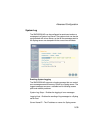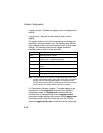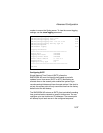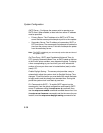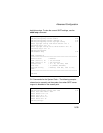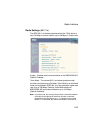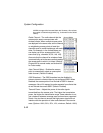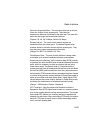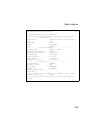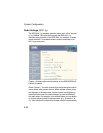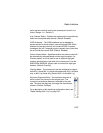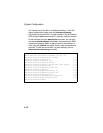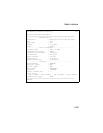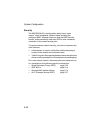
Radio Interface
5-43
Maximum Supported Rate – The maximum data rate at which a
client can connect to the access point. The maximum
transmission distance is affected by the data rate. The lower the
data rate, the longer the transmission distance.
(Options: 54, 48, 36, 24 Mbps; Default: 54 Mbps)
Beacon Interval – The rate at which beacon signals are
transmitted from the access point. The beacon signals allow
wireless clients to maintain contact with the access point. They
may also carry power-management information.
(Range: 20-1000 TUs; Default: 100 TUs)
Data Beacon Rate – The rate at which stations in sleep mode
must wake up to receive broadcast/multicast transmissions.
Known also as the Delivery Traffic Indication Map (DTIM) interval,
it indicates how often the MAC layer forwards broadcast/multicast
traffic, which is necessary to wake up stations that are using
Power Save mode. The default value of 2 indicates that the
access point will save all broadcast/multicast frames for the Basic
Service Set (BSS) and forward them after every second beacon.
Using smaller DTIM intervals delivers broadcast/multicast frames
in a more timely manner, causing stations in Power Save mode to
wake up more often and drain power faster. Using higher DTIM
values reduces the power used by stations in Power Save mode,
but delays the transmission of broadcast/multicast frames.
(Range: 1-255 beacons; Default: 2 beacons)
RTS Threshold – Sets the packet size threshold at which a
Request to Send (RTS) signal must be sent to a receiving station
prior to the sending station starting communications. The access
point sends RTS frames to a receiving station to negotiate the
sending of a data frame. After receiving an RTS frame, the station
sends a CTS (clear to send) frame to notify the sending station
that it can start sending data.



